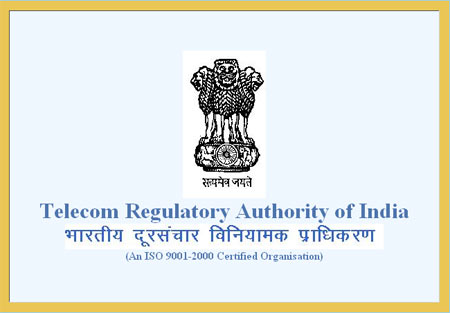Prologue
Shri Yamushtakam is the first among the sixteen works known as shodashgranth. This particular granth is composed by Shri Vallabh in v.s.1549(1491 A.D.) on the Shraavan Shukla 3 during the prithvi parikrama ShriVallabh was in Gokul and he was undecided about the exact place of Thakurani Ghat. At that time Shri Yamunaji herself appeared and guided Shri Vallabh and pointed out the exact place. Shri Vallabh than and there composed Shri Yamunashtakam,the beautiful stotra,in the praise of Shri Yamunaji. It consists 9 verses,eight of them are written in praise of Yamunaji and in 9th Shri Vallabh describes for daily paath- doers the fruits ofShri Yamunashtakam.
The fourth beloved (turyapriya)of Shri Krishna,Shri Yamunaji is epitome of selfless devotion towards Krishna,and only through her or her Kripa(grace) a jeeva(soul) can experience the param phal i.e. leela-pravesh. She purifies souls and removes all obstacles which are in the way between jeev and prabhu and gives the exalted jeeva a new body fit to experience the leela-phal-"tanu-navtva"! For ordinary bhakta of to-day the recital of Yamunashtakam daily will enhance his love towards Shri Krishna,abolish his paap-bad deeds and above all the bhakta will be able conquer his svabhava-basic instincts.
Shloka 1
Namami Yamunamaham sakal-siddhi-hetum-muda
Murari-pad-pankaj-sfurad-amand-renutkatam I
Tatastha-nav-kanan-prakat-mod-pushpambuna
Sur-asur-supujit smarpitu shriyam bibhratim II1II
I (Shri Vallabh)bow joyfully to Shri Yamunaji,the giver of divine super natural powers for experiencing the bhagvadleela. Shri Yamunaji is loaded with the glistening sands emanating from the lotus feet of Murari ShriKrishna. The water of Shri Yamuna is scented with the perfumes of blossomed flowers from the forests located on the banks of Shri Yamuna,such Shri Yamuna is worshipped by gods and demons equally. II1II
Shloka 2
Kalindagirimastake patadamanda poorojvalaa
Vilasagamanollasat Prakataganda shailonnata I
Saghoshagati danturaa samadhiroodha dolottamma
Mukundarativardhini jayati padmabandhosuta II2II
"Falling forcefully on Mount Kalinda Shri Yamunaji appers to be crystal white and looks beautiful with her luxurious flow through cheek like rocks of mountain. Shri Yamunaji follows a zig-zag path noisily and while she flows up and down she looks as if sitting on a beautiful swing. Shri Yamunaji is superior as she enhances our love towards lotus-feet of Lord Mukund. II2II
Shloka 3
Bhuvam bhuvanapaavaneem adhigatamanekasvanai
Priyabhirivasevitaam Shuka-Mayur-Hansadibhee I
Tarangabhujakankana prakatamuktikavaluka
Nitambatatasundareem namata Krishnaturya-priyaam II3II
Bow down to Shri Yamunaji the fourth beloved of Lord Shri Krishna,who has come down to earth to sanctify it and on earth she is served by parrots,peacocks,swans etc. with melodious noises as if served by loving friends. Shri Yamunaji wears bangles in the form of waves and sand on them looks like pearls. Shri Yamunaji looks beautiful with hips in the form of her two banks. II3II
Shloka 4
Anant-gun-bhushite Shiv-viranchi-devstute
Ghanaghannibhe sada Dhruv-Parasharabhistade
Vishuddha-Mathura-tate sakal-gop-gopivrite
Kripajaladhi-sanshrite mam manah sukham bhavay II4II
Shri Yamunaji is adorned with countless virtues and is worshipped by Shiv,Brahma and other gods. She has a lustre of rain filled clouds and fulfilles the desires of sages like Dhruv and Parasher. Pious city Mathura is situated on her banks and she is surrounded by gop and gopees whose only refuge is kripasagar Shri Krishna.O Shri Yamuna! please bless me with the happiness of mind II4II
Shloka 5
Yaya charan-padmaja Mur-ripoh priyam-bhavuka
Samagamanato-bhavat sakal-siddhida sevtam I
Taya sadrashtamiyat Kamalja-sapatniv yat
Hari-priya-kalindaya mansi me sada sthiytam II5II
Shri Gangaji who has emerged from the lotus feet of God could become beloved of Krishna and fulfilled every wish of her followers only after her merger with Shri Yamunaji. Shri Yamunaji can be compared with lotus born Shri Laxmiji only, who is also Shri Krishna's beloved. Shri Yamunaji who destroys all the ills of Shri Krishna's devotees may live in my (Shri Vallabh's)heart forever. II5II
Shloka 6
Namostu Yamune sada tav charitrmatyadbhutam
Na jatu yama-yatana bhavati te payah-panatah I
Yamopi bhagini-sutan kathamu hanti dushtanapi
Priyo bhavati sevanat tav harer-yatha gopikah II6II
O Shri Yamuna! Your character is wonderful!! A person who partakes your water has no fear of pain inflicted by Yama-the god of death-as how could he hurt his sister’s sons(devotees)however wicked they may be because they become beloved of Shri Krishna like Gopikas by serving you! O Shri Yamuna! Let us pay obeisance to you incessantly.II6II
Shloka 7
Mamastu tav sannidhau tanu-navatvam-etavata
Na durlabhtama ratih Mur-ripau Mukund-priye I
Atostu tav lalana surdhuni param sangamat
Tavaiv bhuvi kirtita na tu kadapi pushti-sthitaih II7II
O beloved of Mukund Shri Yamuna! By your nearness let my body become new(worthy) so to gain the love of Shri Krishna-the enemy of demon Mura- is not difficult. So let us shower you with love(by prayers) as Ganga became famous only after merging with you and was not worshipped by Pushti-Jivas before that.II7II
Shloka 8
Stutim tav karoti kah Kamalaja-sapatni priye
Harer-yadanu sevaya bhavati saukhya-mamokshatah I
Iyam tav kathadhika sakalgopika-sangam-
smar-shram-jalanubhi sakal-gatrajaih sangamah II8II
oh! Shri Yamunaji! the co-wife of Laxmiji! The beloved of Krishna!! no one is competent enough to praise you. By worshipping Laxmi with Shri Hari one gets the bliss of salvation only while you give much more- as your water is mixed with sweat generated by the bodies of Shri Krishna and Gopikas while having exotic sports and by worshipping you the devotee gets the bliss of this too.II8II
Shloka 9
Tavashtakamidam muda pathati soor-sute sada
Samast-durita-kshyo bhavati vai Mukunde ratih I
Taya sakal-siddhayo Mur-ripushcha santushyati
Svabhav-vijayo bhavet vadati Vallabh Shri-Hareh II9II
O Shri Yamuna! Daughter of Sun!! A person who always recites these eight stanzas with joy gets freedom from all of his sins and he surely gets affection of Lord Shri Krishna by which he attains all the super natural powers. Shri Krishna-the enemy of demon Mura-becomes satisfied and devotee conquers his nature so says Shri Vallabh.II9II





















